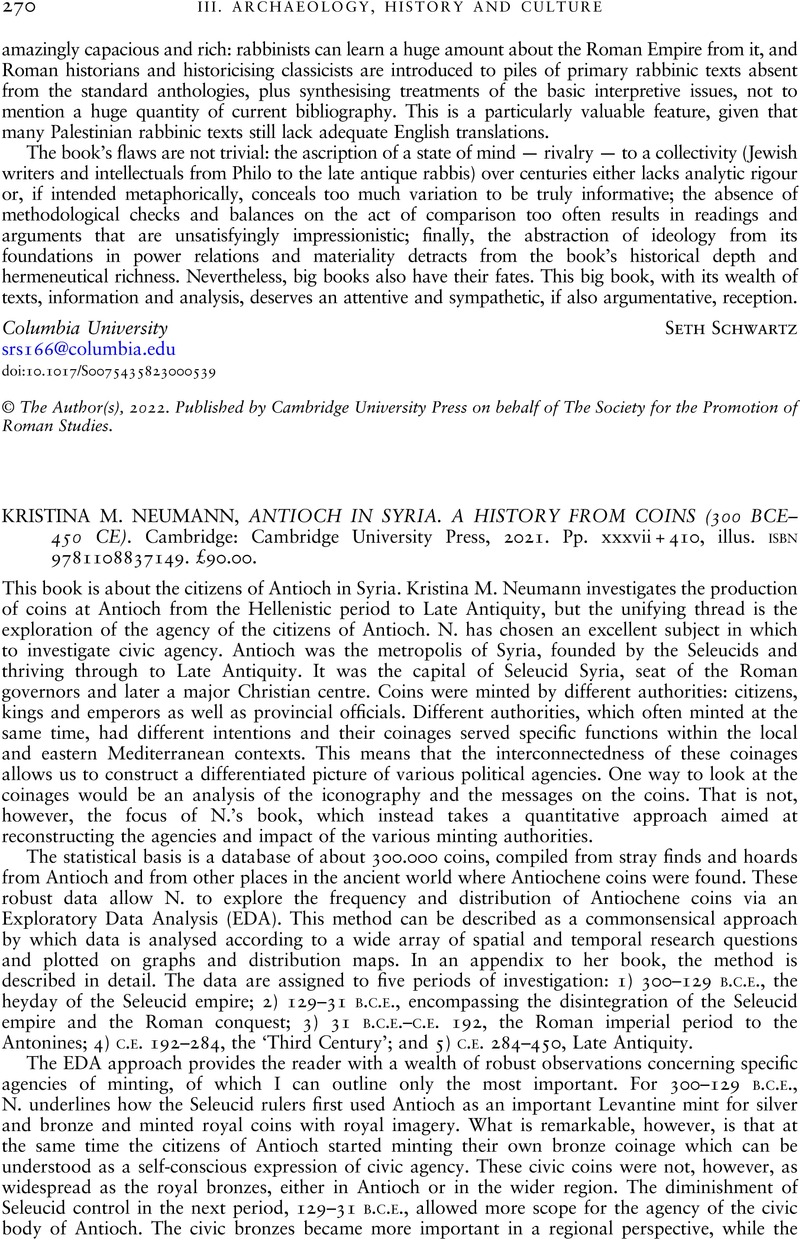No CrossRef data available.
Article contents
KRISTINA M. NEUMANN, ANTIOCH IN SYRIA. A HISTORY FROM COINS (300 BCE–450 CE). Cambridge: Cambridge University Press, 2021. Pp. xxxvii + 410, illus. isbn 9781108837149. £90.00.
Review products
KRISTINA M. NEUMANN, ANTIOCH IN SYRIA. A HISTORY FROM COINS (300 BCE–450 CE). Cambridge: Cambridge University Press, 2021. Pp. xxxvii + 410, illus. isbn 9781108837149. £90.00.
Published online by Cambridge University Press: 21 November 2022
Abstract
An abstract is not available for this content so a preview has been provided. Please use the Get access link above for information on how to access this content.

Information
- Type
- Reviews
- Information
- Copyright
- Copyright © The Author(s), 2022. Published by Cambridge University Press on behalf of The Society for the Promotion of Roman Studies

